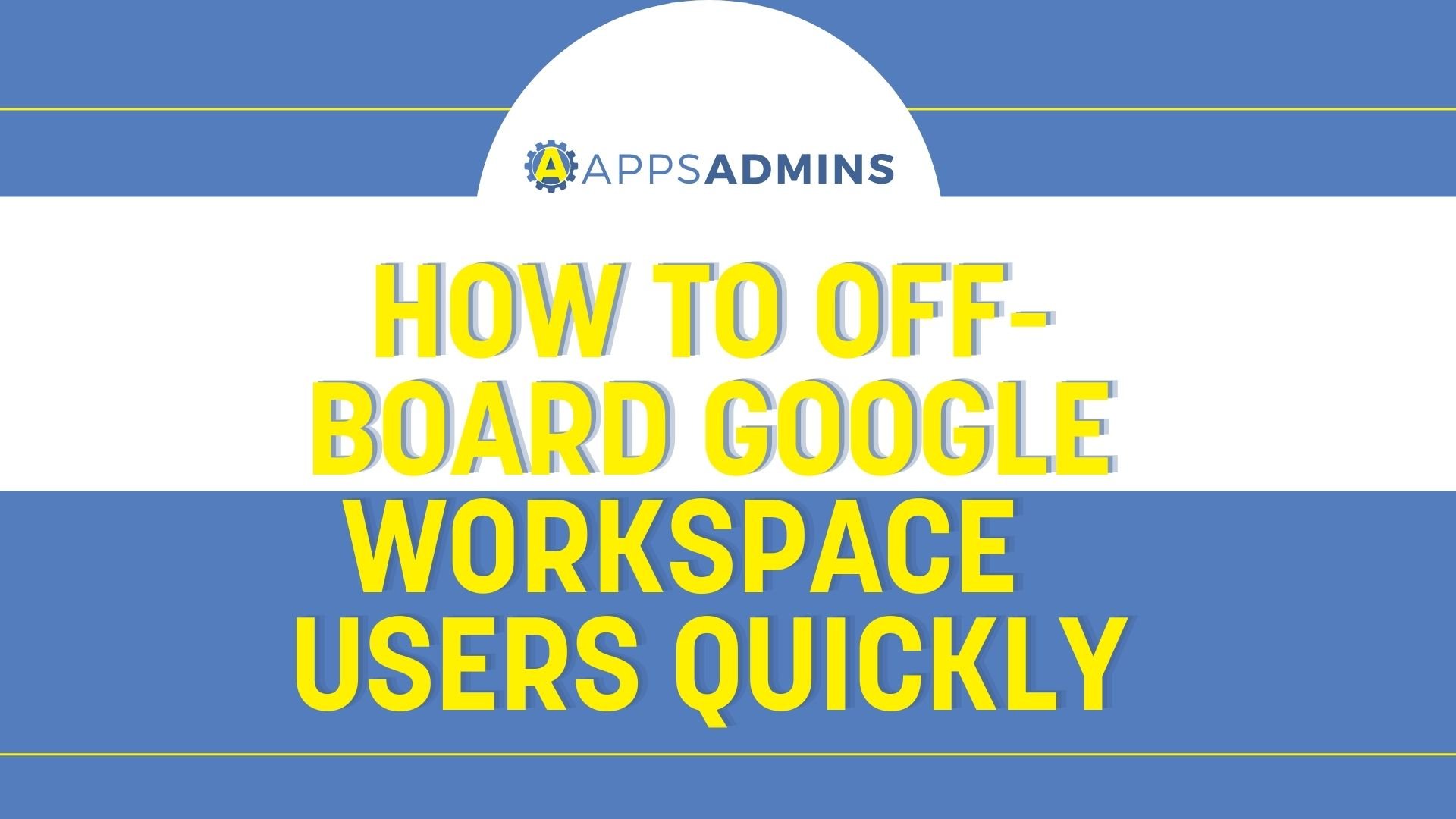G Suite Business Free for 30 Days
Sign up for a Free 30 Day Trial of G Suite Business and get Free Admin support from Google Certified Deployment Specialists.

 Ever wondered whether you'd be better off with G-Suite or Microsoft Office for your productivity suite needs? You're not alone.
Ever wondered whether you'd be better off with G-Suite or Microsoft Office for your productivity suite needs? You're not alone.
For years now, Google and Microsoft have been locked in an epic way for the position of business productivity leader. While both options deliver excellent, cloud-based solutions for business performance, only one can give your company what it needs to truly thrive in today's competitive marketplace.
Today, we're going to explore the potential and possibilities of both G-Suite and Office 365 to help you discover the best solution for your mid-market enterprise. We've examined each product according to its ability to serve between 100 and 1000 users, so keep that in mind as you read!
Introducing G-Suite and Office 365: Features
As productivity suites designed for practically any-sized business, Microsoft Office 365 and Google G-Suite have a lot of overlap to consider. When you start searching for the right solution to serve your business, you'll notice that the core selection of tools available with both Google and Microsoft are more or less the same. You can expect:
- Email (Gmail or Outlook)
- Word Processing (Docs or Word)
- Slideshows (Slides or PowerPoint)
- Spreadsheets (Sheets or Excel)
The main difference at first glance is that while Microsoft sticks primarily to the essentials, Google throws some extra accessibility options in too. For instance, if you want to collect some feedback from your employees, then you can use the "Forms" service. There's nothing similar available for Microsoft Office 365 users yet.
Of course, Microsoft still has a lot of functionality to offer with Office 365. As part of your productivity portfolio, you'll find leading apps like Word, Excel, and PowerPoint. What's more, as an additional twist, these tools are available both online, (on the cloud) and offline too.
Email and Communication
In terms of communication, both Google and Microsoft thrive. Google offers Gmail, one of the most popular email clients in the world, alongside collaboration apps like Google Hangouts Meet and Google Hangouts Chat. The deeply-integrated Google calendar is another great part of working with G-Suite because it connects seamlessly to the rest of the Google portfolio. You can set up and join a meeting on Hangouts from within your Google Calendar.
With Microsoft Office 365, you'll also find plenty of additional communication features too. Microsoft Teams is the collaboration, and instant-chat tool available from Microsoft, and it's growing in popularity every day as of late - quickly becoming a competitor to Google Hangouts and Slack. Microsoft also offers Outlook for email, and Yammer for your day-to-day conversations too.
Email: Gmail or Outlook?
If you focus on the basics with the email functionality of both G-Suite and Office 365 for mid-market companies, more of a gap begins to emerge. Microsoft is somewhat more generous with their 1TB of storage option. However, if you're a mid-market company with lots of communication coming in and out each day, then you might prefer Google's unlimited mailbox option. You may only be able to store 30GB on Gmail, but you can always save your emails and load them into the Google cloud if you need extra storage potential.
Video/ Voice Calling
It's also worth looking at the voice and video calling options with both Microsoft and Google today. After all, alternative modes of communication are on the rise. As remote working grows more popular, video communication is one of the best ways for modern companies to make sure that they can maintain immersive conversations with people overseas and outside the office.
G-Suite comes with voice and video calling solutions ideal for the mid-market enterprise. Hangouts Chat and Meet allow for both instant messaging and video or audio calling depending on what you need. You can only have around 30 simultaneous participants in a group video chat at a time, but that will be enough for most enterprise groups. You can also use Google broadcast features to make announcements if you have smart speakers.
Office 365, on the other hand, offers video and audio call functionality through Microsoft Teams and Skype for Business. Microsoft Teams and Skype for Business are more popular than Hangouts today, although Microsoft will soon be phasing out the Skype option. Microsoft Teams may be a better solution for some companies who expect to have more significant meetings, as you can connect with up to 250 participants at a time using this service.
Collaboration and Teamwork
"Collaboration" is quickly becoming one of the biggest buzzwords in the mid-market enterprise. In this age of remote working and globalization, teamwork rarely happens on a face-to-face basis. Today's companies need a way to collaborate virtually instead.
The good news is that you can easily collaborate using Google and Microsoft productivity solutions. G-Suite, like most of the Google products available today, is designed to work seamlessly over the cloud. Though Microsoft does have collaboration options, G-Suite is the company that takes teamwork to the next level. You can collaborate on documents or spreadsheets in real-time, leaving notes on your co-worker's projects as you go. What's more, you can also launch meetings directly from a Google doc, calendar page, or even your Gmail account.
While Office 365 has web versions of all of its popular productivity tools, it's not quite as popular as Google when it comes to getting work done. Microsoft does have the benefit of allowing users to work on their documents both on the cloud and in offline apps, but collaboration is far more of a challenge with these products. Changes need to be synced manually, and the whole experience doesn't seem to flow quite as well.
Additionally, it's worth noting that Google tools like Docs and Sheets have been the go-to option for web users in search of collaboration for a few years now. If your mid-market employees are used to using these tools in their day-to-day lives, they may be reluctant to switch to the Microsoft portfolio.
Security and User Privacy
Few things matter more than security and privacy when choosing a tool for your mid-market enterprise company today. The good news is that with Google and Microsoft, you should be able to rest assured that your information is safe.
Google takes extra measures to protect its users from any potential fraud or privacy problems. Not only are all the G-Suite applications secure and safe to use, but G-Suite also features various levels of compliance too, including ISO 27001, ISO 27018, HIPAA and more. It also comes with special protection from malware.
One particularly compelling aspect of G-Suite's security is the fact that you know you're using the same tools that the Google experts use every day. What's more, administrators have plenty of control over the way that employees can access and use tools too. Users can implement two-factor authentication processes and activate data-loss prevention solutions within their admin settings.
Security is also a core concern for Microsoft and their Office 365 suite. At the server level, Office 365 provides plenty of encryption options for your files, and you can rest assured that everything is protected with end-to-end encryption when you're transferring and sharing documents. Additionally, Microsoft also provides additional support via two-step verification and advanced threat protection solutions.
Like Google, Microsoft also meets with the strict standards of various compliance regulations, including HIPAA, ISO 27001 and ISO 27018.
Accessibility and Reliability
Both Google G-Suite and Microsoft Office 365 are cloud-based productivity applications. That means that you can rely on them to keep your documents safe and sound regardless of what happens within your office.
Because G-Suite is 100% cloud-based, you will need to be able to access your web-browser to use it, unless you have the app downloaded on your smartphone. Even then, you will need an internet connection to start working on your projects. Additionally, your Docs and Sheets will work best if you're using the Chrome browser, but you can download this on any Mac or PC. You'll also be able to access your Chrome tools naturally through most smartphones - specifically if you choose the Android OS.
On the other hand, Office 365 provides both online and offline services. You can download your Office 365 solution and continue working without internet access. However, this isn't quite as convenient as it sounds. You need to connect to the online service every month to maintain your subscription. What's more, unlike G-Suite where new employees can be set-up in seconds, Microsoft will require you to download new tools and services onto an employee computer, meaning that set-up takes longer.
File Storage and Protection
When it comes to keeping your files safe and secure, G-Suite offers a lot of options. Even if you get the basic Google plan, you'll still have 30 GB of storage potential available. However, for mid-market enterprise companies, we recommend going a little larger. The G-Suite business plan offers unlimited storage, which is crucial if you're the kind of company that goes through a lot of files.
The only catch here is that you'll need five or more user accounts to access the unlimited storage option, and let's face it, that should be easy enough to manage with your mid-sized company.
Office 365 offers a better basic storage plan than G-Suite at 1TB, but when you look at the programs and pricing options, things start to even out.
Plans and Pricing
Your budget isn't the most important thing you'll need to think about when you're choosing the right tool for your mid-sized business, but it does play a part. When it comes to prices and plans, G-Suite is much simpler than Office 365, with only 3 options to choose from:
-
G Suite Basic: $5 per month per user with 30GB of storage and all the essential communication tools and features you would expect.
-
G Suite Business: $10 per month per user with unlimited cloud storage, the basic features, and also the smart search and audit reporting capabilities.
-
G Suite Enterprise: $25 per month per user, complete with additional protection from data loss and third-party archiving tools.
Office 365 has more options to choose from for midsize businesses, but the truth is that you might not need this much variety. The pricing is available either on a monthly or annual basis. For companies with fewer than 300 employees, the Business Essentials, Business, and Business Premiums all offer 1TB of storage. However, if you have more than 300 users, you'll need to upgrade to an Enterprise level, with plans that extend to up to $35 per user per month.
Things to Watch
Though both Microsoft Office 365 and Google G-Suite have a lot to offer companies in search of productivity solutions, it's worth noting that they're not sitting on their laurels. Both companies are making investments into the latest disruptive technology on the market, such as analytics and artificial intelligence.
Google has made some very significant changes lately, with smart predictive email solutions and enhanced services that allow G-Suite users to expand into the AI world for themselves. Google also offers AI in the Explore tab of Google Docs, where you can find relevant information from your work, and around the web while you're working.
Which Option Should You Choose?
At the end of the day, whether you decide to go with G-Suite or Office 365 will depend on your needs as a mid-sized company and the demands that you can place on your IT team.
G-Suite has found a strong market among mid-market companies that need the right balance between forward-thinking features and budgetary restraints. Google's commitment to innovation means that you can expect to always be on the cutting edge of technology if you sign up to use the G-Suite productivity tools.
On the other hand, Microsoft's approach to productivity is far more traditional. If you're nervous about moving fully to the cloud, or you're not sure whether you need the latest disruptive technology in your communication and collaboration stack, then Microsoft may be a simpler fit.
Whatever you decide to do with your business, remember to get the right help. Coolhead Tech is on hand to guide you through your productivity suite integration, so you can better empower your workforce.
.jpg?width=818&name=appsadmins-svg-rules-1%20(2).jpg)







